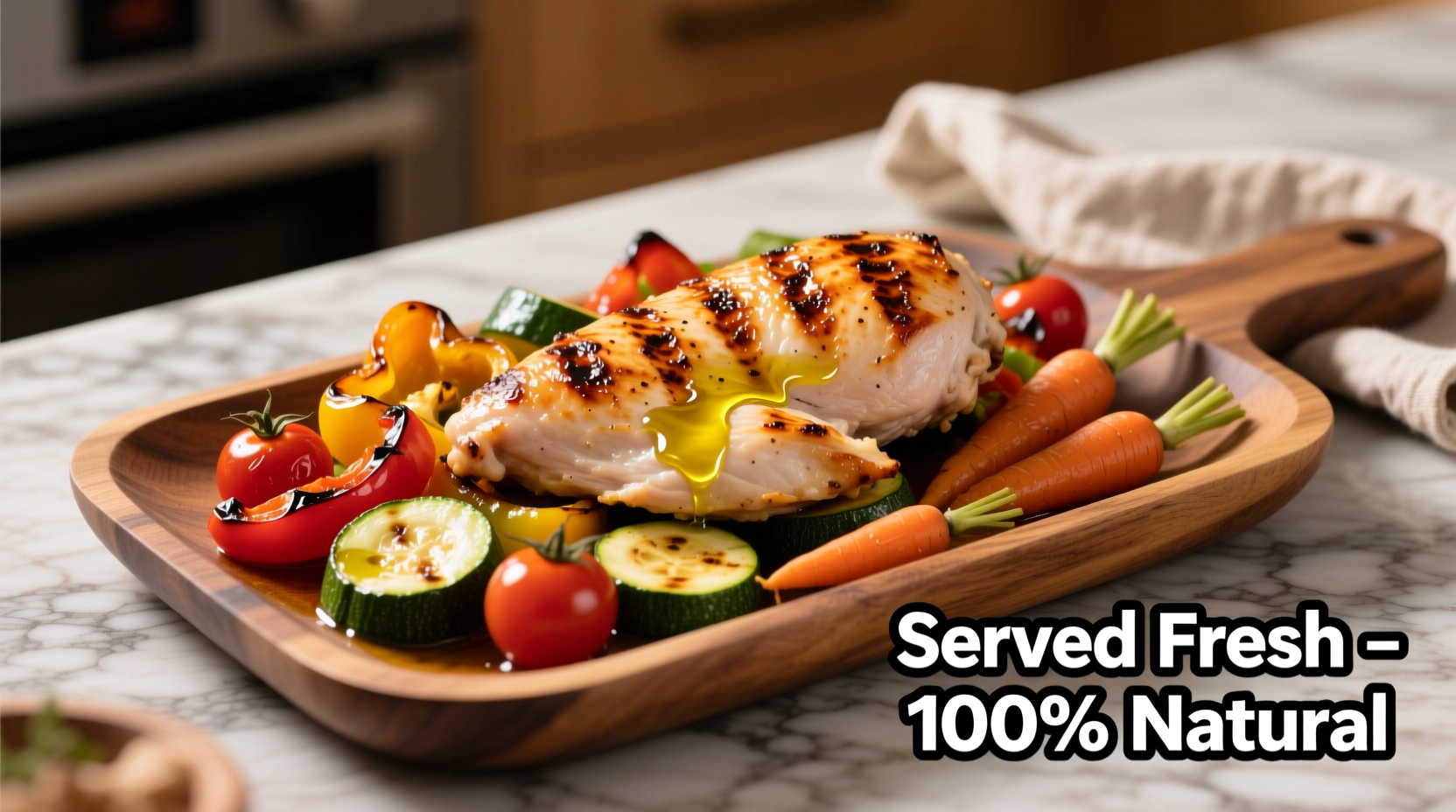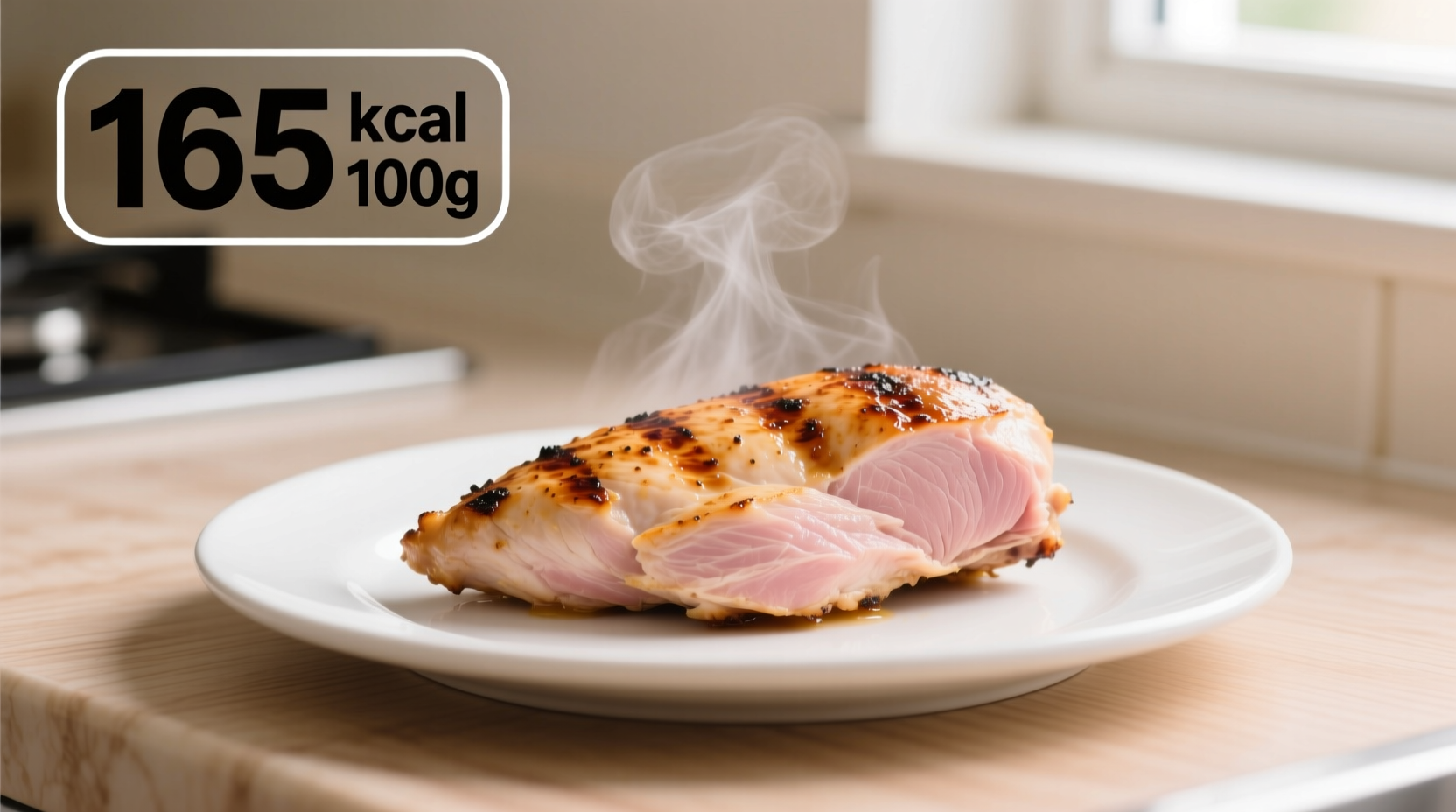Understanding Chicken Breast Calories: Your Complete Guide
When planning meals for weight management, muscle building, or general health, knowing exactly how many calories in cooked chicken breast helps you make informed dietary choices. This guide delivers precise nutritional information based on verified data sources, not estimates.
Standard Calorie Count for Cooked Chicken Breast
The calorie content of chicken breast depends primarily on portion size and cooking method. According to the USDA FoodData Central, the official nutritional database:
| Portion Size | Calories | Protein | Fat |
|---|---|---|---|
| 3 ounces (85g) | 128 | 26g | 2.7g |
| 4 ounces (113g) | 171 | 35g | 3.6g |
| 100 grams | 165 | 31g | 3.6g |
| 1 cup (140g) | 231 | 43g | 5.0g |
This calories in cooked chicken breast chart shows why it's favored by nutritionists for high-protein, low-calorie meal planning. The protein-to-calorie ratio makes it exceptionally efficient for meeting daily protein requirements without excess calories.
How Cooking Method Affects Calorie Count
Many people wonder does cooking chicken breast add calories. The answer depends on your preparation technique:
- Grilled or baked without oil: Minimal calorie change (approximately 165 calories per 100g)
- Pan-fried with oil: Adds 30-50 calories per teaspoon of oil used
- Breaded and fried: Can double calorie content (300+ calories per 100g)
- Slow-cooked or poached: Slight reduction as fat renders into cooking liquid
For the most accurate how many calories cooked chicken breast contains in your specific preparation, weigh before and after cooking. Chicken breast loses about 25% of its raw weight during cooking due to moisture loss, concentrating nutrients but not adding calories.
Nutritional Benefits Beyond Calories
Chicken breast offers more than just lean protein. A 100g serving provides:
- Nearly 100% of your daily niacin (vitamin B3) needs
- Substantial selenium (40% of daily value)
- Good amounts of vitamin B6, phosphorus, and magnesium
- Negligible carbohydrates (0g)
According to the Academy of Nutrition and Dietetics, chicken breast's high protein content promotes satiety, helping with weight management by reducing overall calorie intake throughout the day.

Practical Meal Planning Applications
Understanding calories in cooked chicken breast per ounce helps you customize portions for specific dietary goals:
- Weight loss: 3-4 ounce portions (128-171 calories) fit well in calorie-controlled diets
- Muscle building: 6-8 ounce portions (256-342 calories) provide substantial protein without excess fat
- Maintenance: 4-6 ounce portions (171-256 calories) balance protein needs with overall calorie goals
Registered dietitians recommend pairing chicken breast with fiber-rich vegetables to create balanced meals that keep you satisfied longer. The combination of lean protein and fiber creates a powerful synergy for sustainable eating habits.
Common Misconceptions Clarified
Several myths persist about chicken breast nutrition:
- Myth: All chicken is the same calorie-wise
Fact: Breast is significantly leaner than thighs or wings (thighs have about 50% more calories) - Myth: Organic chicken has fewer calories
Fact: Organic certification affects farming practices, not nutritional composition - Myth: Raw and cooked chicken have identical calories
Fact: Cooking concentrates nutrients as moisture evaporates, but doesn't add calories unless fat is added
For those tracking how many calories cooked chicken breast has for meal prep, remember that pre-cooked store-bought chicken often contains added sodium or marinades that increase calorie content.
Tracking Accuracy Tips
To ensure precise calorie counting with chicken breast:
- Weigh portions after cooking for most accurate tracking
- Account for any oil, marinades, or sauces used in preparation
- Use kitchen scales rather than volume measurements
- Reference USDA data rather than app estimates which can vary
- Consider using nutrition tracking apps that sync with USDA database
Professional nutritionists emphasize that small variations in chicken breast size and cooking method create minor differences in calorie counts, but the standard values remain remarkably consistent across sources.
Final Thoughts on Chicken Breast Nutrition
Knowing exactly how many calories in cooked chicken breast empowers you to make informed dietary decisions. With its exceptional protein-to-calorie ratio and versatility in preparation, chicken breast remains a cornerstone of balanced nutrition plans. Whether you're focused on weight management, athletic performance, or general health, this lean protein source delivers substantial nutritional benefits without excessive calories.











 浙公网安备
33010002000092号
浙公网安备
33010002000092号 浙B2-20120091-4
浙B2-20120091-4